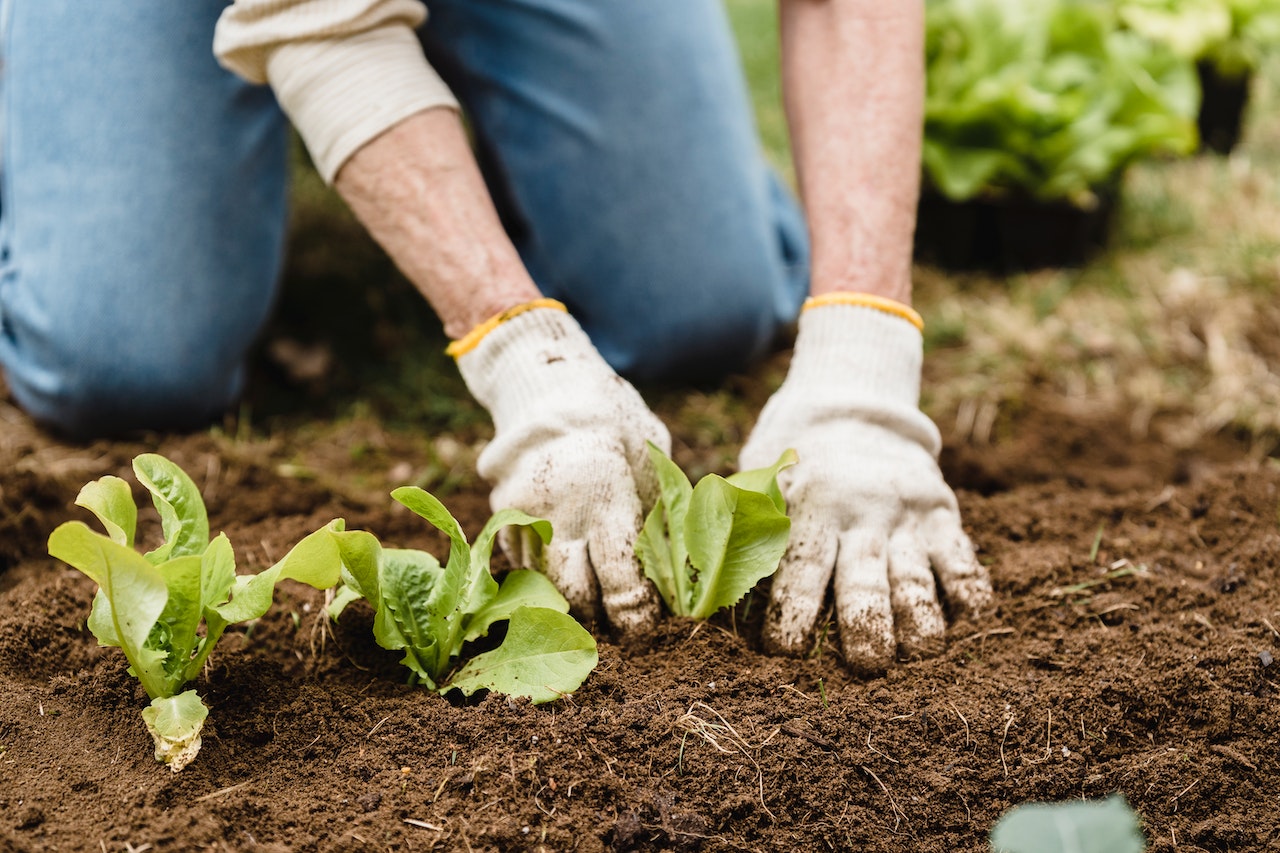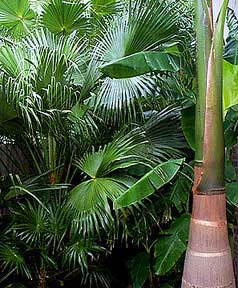Tropical plants, with their lush foliage and exotic appeal, bring a vibrant touch to any home or garden. Yet, ensuring their healthy growth requires more than just regular watering and exposure to sunlight. They need specific nutrients to thrive, and these are often provided by fertilizers.
Understanding the needs of your tropical plants is somewhat akin to a conversation. Just as you need to understand the context in a dialogue, interpreting the signs your plants give you is equally crucial. Yellowing leaves might indicate a lack of nutrients, or drooping might signify overwatering. Your response to these signs, whether adjusting the watering schedule or changing the fertilizer, completes this silent dialogue.
In this article, we’ll navigate this conversation with your tropical plants, focusing on the vital role of fertilizers. We’ll dive into the different types of fertilizers and guide you in selecting the best ones to meet the unique needs of your tropical plants.
Understanding Your Tropical Plants and Their Needs
Tropical plants hail from climates that are warm and humid year-round. They’re accustomed to rich, well-drained soils abundant in nutrients. When we bring these exotic plants into our homes or gardens, replicating their native conditions becomes key to their survival and growth.
Much like understanding the background and culture of a conversational partner aids in meaningful dialogue, knowing your plant’s origins and needs helps you take care of them more effectively.
Tropical plants such as ferns, palms, and orchids, among others, have different nutritional requirements. These needs may change based on their growth stage and the season of the year. Monitoring their growth, leaf color, and overall vitality will help you assess these needs, similar to how non-verbal cues assist in communication.
In the upcoming sections, we’ll discuss how fertilizers aid in meeting these nutritional needs, leading to healthier and more vibrant tropical plants.
Understanding Fertilizers: The Nutritional Conversation Boosters
Just as enriching vocabulary can enhance a conversation, fertilizers can significantly enhance the growth and vitality of your tropical plants. They contain essential nutrients that your plant needs to thrive, including Nitrogen (N), Phosphorus (P), and Potassium (K).
Each of these nutrients plays a unique role. Nitrogen promotes lush foliage, Phosphorus supports root development and flowering, while Potassium strengthens the plant’s overall health and disease resistance. It’s like a well-rounded conversation with different points being covered to ensure an enriching dialogue.
However, not all fertilizers are created equal. In the next sections, we’ll discuss different types of fertilizers and their benefits, helping you choose the perfect nutritional blend for your tropical plants.
Organic versus Synthetic Fertilizers
When it comes to plant nutrition, think of organic and synthetic fertilizers as two different types of conversations you can have with your tropical plants.
Organic fertilizers are made from natural stuff like compost, bone meal, or manure. This is food that breaks down slowly, giving your plants a steady, balanced diet of nutrients. It’s like having a long, heart-to-heart talk with a friend: the conversation goes deep and there’s a lot of understanding. Plus, organic fertilizers help improve the soil, making it a better home for your plants and useful tiny critters living in the soil.
Synthetic fertilizers, on the other hand, come from chemicals made in factories. They feed your plants really quickly. It’s like having a quick, casual chat: there’s instant connection but it doesn’t last long. They can give your plants a quick nutrient boost when needed, but they don’t do much for the soil. In fact, using too much synthetic fertilizer can sometimes harm the soil and its tiny inhabitants.
The best choice for your tropical plants really depends on what they need and how healthy your soil is. Don’t worry though, we’ll go through how to pick the best fertilizers for your plants in the next sections. This way, you’ll always know how to have the best “conversation” with your plants!
The Best Fertilizers for Tropical Plants: Personalizing Your Plant’s Nutrient Dialogue
Choosing the best fertilizers for your tropical plants is like finding the right words for a meaningful conversation. Here are some of the top choices to consider:
1. General Purpose Organic Fertilizers: These fertilizers are an excellent place to start. They typically provide a balanced blend of Nitrogen (N), Phosphorus (P), and Potassium (K), which are crucial for overall plant health. Examples include Espoma Plant-tone or Dr. Earth Organic All Purpose Fertilizer.
2. Specialty Organic Fertilizers: Some tropical plants have specific nutrient requirements. For instance, orchids might benefit from a high-phosphorus fertilizer like Espoma Orchid! Plant Food for vibrant blooms. Similarly, palms often need extra magnesium and manganese, which are provided by fertilizers like Jobe’s Organics Palm Granular.
3. Compost: Compost is like the friendly chatter in the nutrient dialogue. It’s a slow-release fertilizer that improves soil structure while providing an array of nutrients. You can make it at home from kitchen scraps and garden waste or buy ready-made compost like Black Gold Compost.
4. Micronutrient Supplements: Aside from N, P, and K, tropical plants also need micronutrients like calcium, magnesium, and iron. If your plant shows signs of deficiencies, such as yellowing leaves or slow growth, supplements like Southern Ag Chelated General Purpose Minor Element Nutritional Spray can help.
When using these fertilizers, follow the instructions on the package to avoid over-fertilizing. Usually, it’s best to apply them during the growing season and reduce the frequency during the dormant winter months.
Remember, using fertilizers is like having a dialogue with your plants, understanding their needs, and responding appropriately. With the right choice of fertilizer, your tropical plants will reward you with lush growth and vibrant colors.
Specialty Fertilizers for Specific Tropical Plants: Tailoring the Conversation
Just as every conversation is unique based on the people involved, the nutritional dialogue with your plants also varies depending on the plant’s specific needs. Here’s a more detailed guide to the best fertilizers for certain tropical plants:
1. Orchids: Orchids are prized for their beautiful, exotic blooms. To support their flowering, they typically need a high-phosphorus fertilizer. Espoma’s Orchid! Plant Food, with its high phosphorus content, is an excellent option. It’s organically derived, ensuring slow release of nutrients, and is formulated to encourage vibrant blooms and deep green leaf color.
2. Palms: Palms, whether grown indoors or outdoors, often require extra magnesium and manganese for their healthy growth. These elements help in the formation of chlorophyll, boosting the plant’s photosynthetic ability. Jobe’s Organics Palm Granular not only contains these necessary micronutrients but also includes a unique blend of beneficial microorganisms that enhance nutrient availability.
3. Citrus plants: Citrus trees, like lemons or oranges, have specific nutrient requirements to produce their fruit and maintain overall health. Jobe’s Organics Fruit & Citrus Granular Fertilizer is tailored to meet these needs. It provides a mix of primary, secondary, and micronutrients that citrus plants need and also enriches the soil with beneficial microorganisms.
4. Ferns: Ferns are loved for their lush, green foliage, and to maintain this, they prefer a fertilizer high in nitrogen. Espoma Plant-tone offers a perfect solution with its all-natural, slow-release formula. In addition to Nitrogen, it also provides a host of other nutrients ensuring balanced nutrition for your ferns.
5. Bromeliads: Bromeliads are unique because they gather nutrients from the air and rainwater, not just the soil. As a result, they prefer a light, slow-release fertilizer. Osmocote Plus Outdoor and Indoor Smart-Release Plant Food offers a balanced nutrition package that lasts for months, making it suitable for these exotic plants.
Remember, when using these fertilizers, always follow the specific instructions on the package for each plant type. This personalized approach to plant nutrition is like having a well-crafted conversation with your tropical plants, meeting their unique needs, and in return, watching them grow and thrive.
Best Practices for Fertilizing Tropical Plants: Cultivating a Successful Nutritional Dialogue
To have effective conversations, it’s important to follow certain guidelines. Similarly, when it comes to fertilizing your tropical plants, following best practices is crucial for their optimal growth and health. Let’s explore these practices in detail:
A. Proper Timing and Frequency of Fertilization
1. Understanding the timing of fertilizer application is essential. Generally, it’s best to fertilize tropical plants during the active growing season when they are actively producing new growth. Avoid fertilizing during dormant periods or winter months when the plant’s metabolic activity slows down.
2. Follow the recommended frequency of fertilizer application provided by the manufacturer. Over-fertilization can harm the plants and cause nutrient imbalances, so it’s important to apply fertilizers in the appropriate amounts and intervals.
B. Appropriate Application Methods
1. Different fertilizers may have specific application instructions. Some fertilizers are applied directly to the soil around the base of the plant, while others may require mixing with water for foliar application. Always read and follow the instructions provided by the fertilizer manufacturer for the best results.
2. Avoid applying fertilizers directly onto the foliage unless specifically instructed. Direct contact with leaves can cause damage and increase the risk of burning.
C. Optimal Watering Practices
1. Watering plays a vital role in the conversation between plants and nutrients. Before applying fertilizer, ensure the soil is adequately moist. Dry soil may prevent proper nutrient absorption.
2. After fertilization, water the plants thoroughly to help distribute the nutrients evenly and prevent potential root burn. Sufficient watering also ensures that the nutrients are available to the plant’s roots for uptake.
D. Observation and Adjustments
1. Just as attentive listening is important in a conversation, closely observe your plants’ response to fertilization. Monitor their growth, leaf color, and overall health regularly.
2. If you notice signs of over-fertilization, such as burnt leaf tips or wilting, flush the soil with water to leach out excess salts and adjust your fertilization routine accordingly.
3. Conversely, if plants show signs of nutrient deficiency, such as yellowing leaves, adjust the fertilization schedule or consider using a fertilizer with a higher concentration of the deficient nutrient.
By following these best practices, you establish a nurturing environment for the ongoing conversation with your tropical plants. Monitoring their progress, making necessary adjustments, and providing the right care will ensure a fruitful dialogue and promote their optimal growth and vitality.
The Environmental Impact of Fertilizers: Nurturing Sustainable Gardening Practices
A. Discussing the Impact of Synthetic Fertilizers on the Environment
It’s important to be aware of the environmental impact of the fertilizers we use in our gardens. Synthetic fertilizers, while providing quick and easily accessible nutrients, can have detrimental effects on ecosystems and waterways. The runoff from excessive or improperly applied synthetic fertilizers can contribute to water pollution, causing algal blooms and negatively impacting aquatic life. Additionally, the production of synthetic fertilizers often requires the use of fossil fuels and generates greenhouse gas emissions, contributing to climate change.
B. The Benefits of Organic Fertilizers in Sustainable Gardening
To mitigate these environmental concerns, many gardeners are turning to organic fertilizers, which offer a more sustainable approach. Organic fertilizers are derived from natural sources and contain beneficial organic matter that improves soil health. They release nutrients slowly, minimizing the risk of nutrient runoff and leaching. Moreover, organic fertilizers enhance the soil’s ability to retain water and nutrients, promoting long-term sustainability and reducing the need for frequent applications.
Organic fertilizers also contribute to the development of a diverse and active soil microbiome, fostering a healthy ecosystem underground. This leads to improved nutrient cycling, disease resistance, and overall plant resilience. By embracing organic fertilizers, we engage in a more harmonious conversation with nature, prioritizing the long-term health of our plants and the environment.
C. Encouraging Eco-Friendly Practices in Home Gardening
To further support sustainable gardening practices, there are several eco-friendly approaches you can adopt:
1. Composting: Start a composting system at home to recycle organic waste from your kitchen and garden. Compost enriches the soil with nutrients and reduces the need for synthetic fertilizers. It’s like having a continuous dialogue with nature, recycling and returning valuable resources to the earth.
2. Crop Rotation: Implement crop rotation techniques in your garden. Rotating the types of plants you grow in specific areas helps prevent the depletion of soil nutrients and minimizes the risk of disease and pest infestations. It’s like diversifying the conversation, creating a healthier and more balanced ecosystem.
3. Water Conservation: Practice efficient watering techniques, such as using drip irrigation or collecting rainwater, to minimize water waste. By conserving water, you contribute to the overall sustainability of your garden and reduce your environmental footprint.
4. Natural Pest Control: Embrace natural pest control methods, such as companion planting, attracting beneficial insects, or using organic pest repellents. This avoids the use of harmful chemicals, maintaining a harmonious conversation with the ecosystem and promoting biodiversity.
By incorporating these eco-friendly practices into your gardening routine, you actively participate in the broader conversation about environmental stewardship. Through mindful choices and sustainable actions, you contribute to the preservation of our natural resources and the well-being of our planet.
Additional Resources
Books:
– Tropical Plants for Home and Garden by William Warren and Luca Invernizzi Tettoni
– The Well-Tempered Garden: Reviving an Old-fashioned Practice to Keep Your Garden Thriving by Christopher Lloyd
– The Orchid Whisperer: Expert Secrets for Growing Beautiful Orchids by Bruce Rogers
Horticultural Organizations and Societies:
– The American Orchid Society
– The Royal Horticultural Society
Local Nurseries and Garden Centers:
– Visit your local nurseries and garden centers to seek personalized advice and recommendations on fertilizers suitable for tropical plants.
Extension Services and Agricultural Universities:
– Contact your local agricultural extension service or agricultural university for guidance on tropical plant care and fertilization specific to your region.
Online Research and Publications:
– Google Scholar for accessing scientific research papers on tropical plant fertilization.
– The Journal of Horticultural Science & Biotechnology for publications related to plant nutrition and fertilization.




